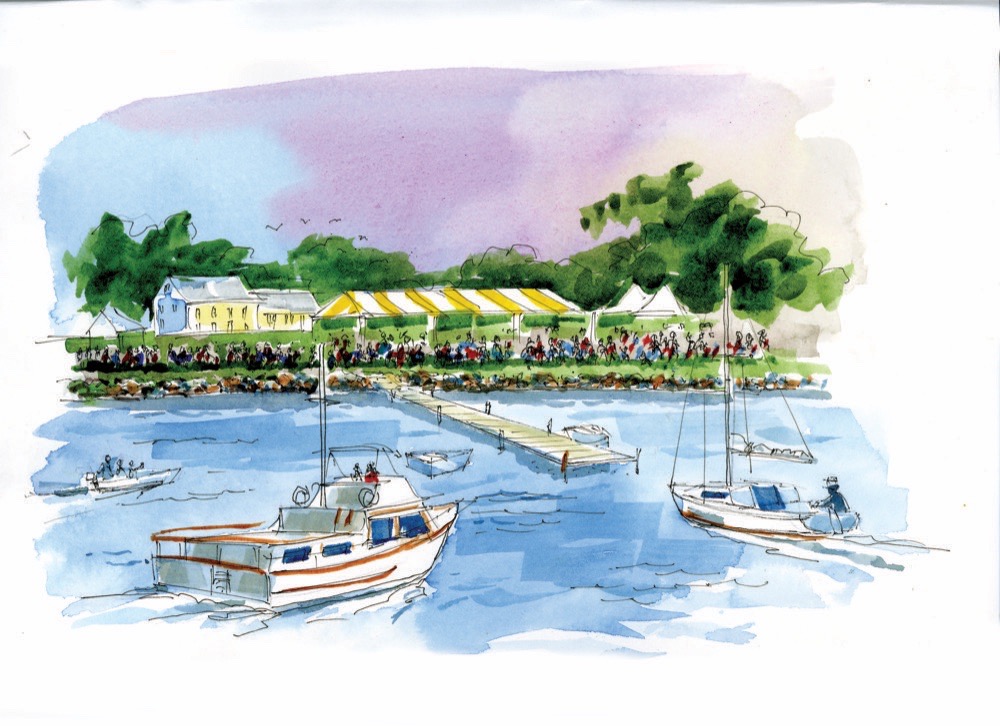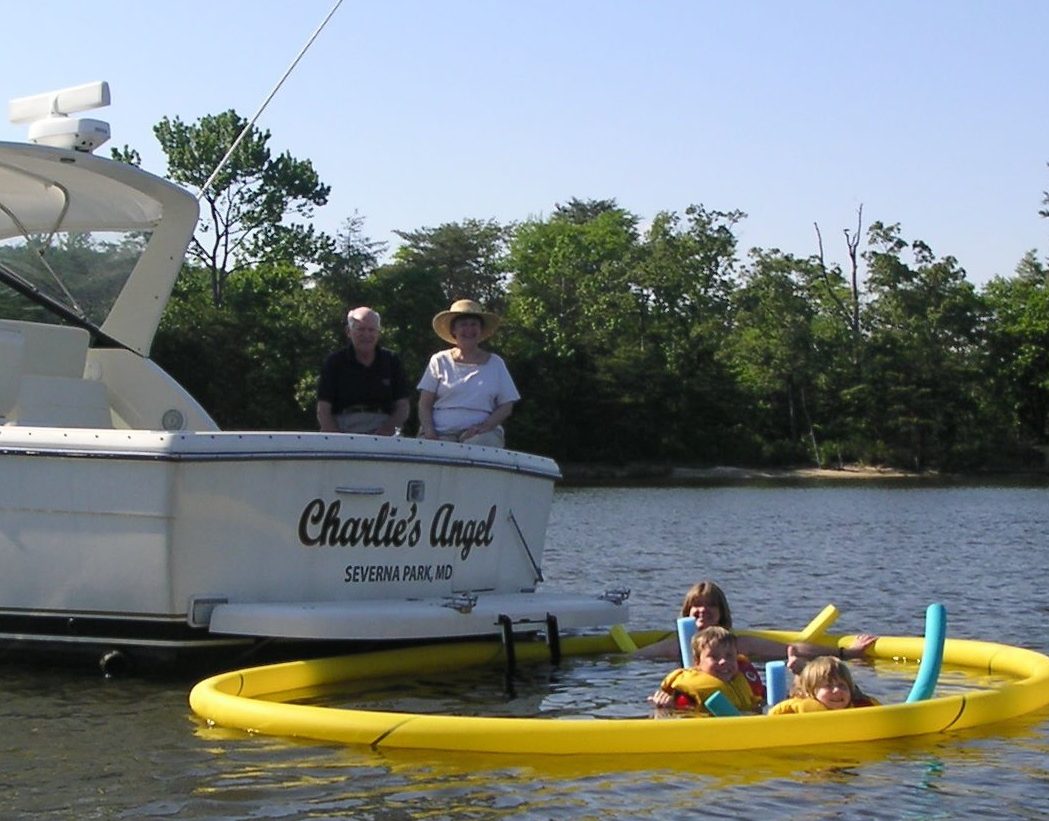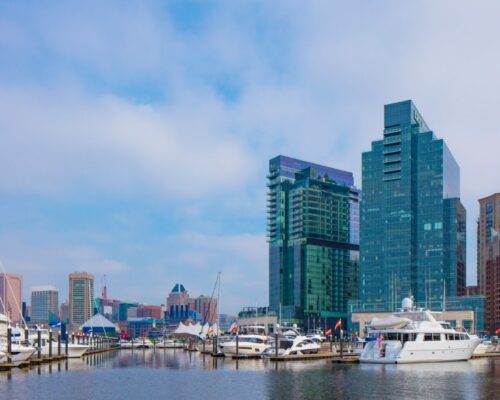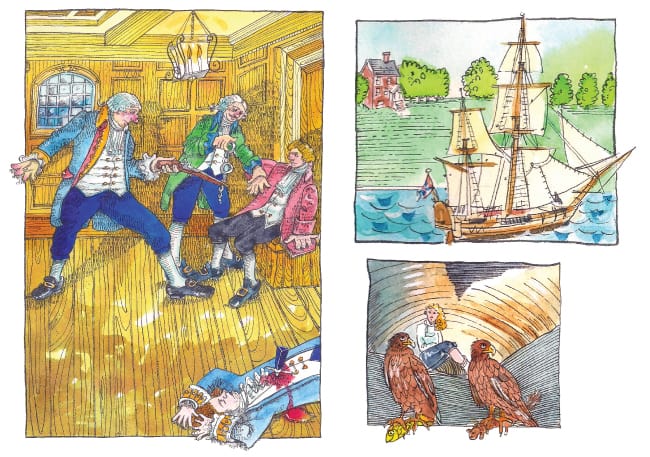Fifty years in, we look back at Bay boating’s big picture. Come on aboard!
You have probably already figured out that this May marks the 50th anniversary of Chesapeake Bay Magazine. What you may not know is that its founding reflects how we were boating, where we were going, and how we got there.
Back in the early 1970s, there were fewer recreational boats out on the Bay, especially cruising-style boats. These tended to be smaller than today’s cruisers, both sail and power. After all, in the 1970s, people were sailing around the world in 26- to 30-foot boats. In fact, famous world cruisers Lynn and Larry Pardee’s boat Serraffyn was only 24 feet. Today, according to local brokers I’ve spoken with, many novice couples start out with at least a 40-foot boat. You or your parents (or—ahem—your grandparents), on the other hand, were likely to find a boat under 30 feet a comfortable sufficiency.
If it was a sailboat (and there were a lot more sailboats around then), it might easily have been a nice O’Day 22 or perhaps a sleek Tartan 27. Mine in those days was a Paceship PY23, bright yellow and lovely to cruise in. I would love to have had a Bay-built boat like a Dickerson, which for many years were manufactured off the Choptank River. Many Dickersons are still sailing today, and a number have been around the world. If it were a powerboat, on the other hand, in the 1970s it might have been a Bertram 31. Maybe it was even a Chris Craft cabin cruiser like the Commander 35.
The Bay’s cruising community tended to venture out in packs then. Boat clubs and yacht clubs up and down the Bay were extremely popular, and the monthly cruise was eagerly subscribed. It meant that somebody in the club probably had been there already, knew the best route, and how to get safely in. Club members clamored for new places to go.
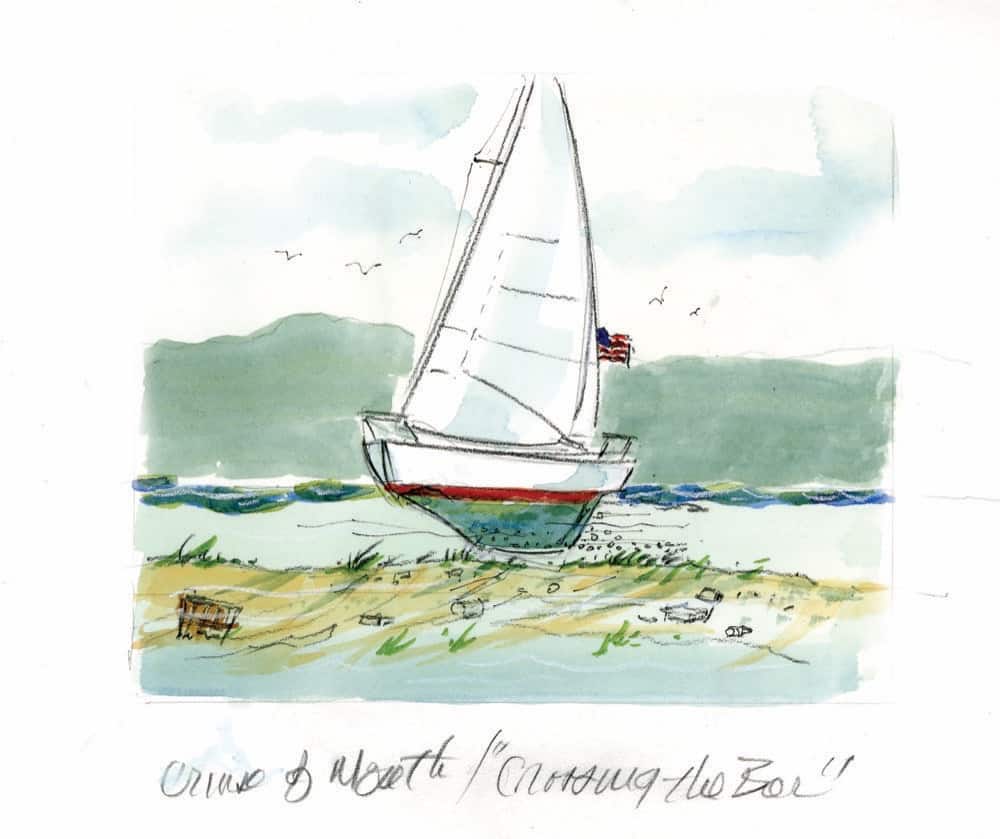
And where did they go? Anchorages mostly, most of them the same favorites we still have. If an anchorage is crowded today, it was probably also a busy place in the 1970s. You know them. The Wye River, for example, where in the ’70s you could still dip a net overboard and come up with half a dozen big crabs. And Worton Creek, of course. Worton has been popular since at least the 1890s, when George and Robert Barrie of Philadelphia extolled its beauties in The Rudder Magazine. Where else? Dun Cove off the Choptank River and Cacaway Island off the Chester River. The Severn Islands. Horseshoe Bend on the St. Marys River and Sandy Point on the Great Wicomico. Little Bay on Fleets Bay, Onancock Creek on the Eastern Shore, and Oldhouse Creek on the Ware. I could fill
a book.
What about today’s favorite destinations, like St. Michaels, Solomons, Rock Hall, Deltaville, and Onancock? Well, in the 1970s they had yet to reach destination status, though of course cruisers stopped by, especially at Oxford and Annapolis, as well as Fort Monroe. But they generally anchored out rather than take a slip. In the 1970s, St. Michaels, Solomons, and the rest were only just beginning to make the change from working fishing villages to charming former working fishing villages, and eventually to what we have today: charming former working fishing villages turned attractive modern cruising centers. The transition for two of these towns began in the 1970s with the founding of their maritime museums—Chesapeake Maritime Museum in St. Michaels and Calvert Marine Museum in Solomons. In fact, cruisers to the Patuxent River were likely to sail past Solomons and head upriver to Vera’s White Sands Beach Club, where Vera herself might dive off the docks and swim out to an anchored boat with a welcoming hibiscus.
Rock Hall, in the 1970s, was still occupied with tonging oysters and clamming. Rock Hall’s harbor wasn’t dredged to allow access by deeper-draft vessels until 1980. Baltimore’s time as a recreational boating center was also in the future. The Inner Harbor wasn’t developed until the 1980s. And Hampton and Norfolk didn’t open their museums and redevelop their waterfront until the 1990s.
Overall there were not nearly as many marinas in the 1970s as there are now, especially marinas that provided space for transients and flocks of visitors like cruising clubs. But all that was about to change. Beginning in the latter part of the 1970s and into the 1980s, the Bay virtually exploded with marina construction. New slips sprouted like duckweed. It’s a good bet that your marina today got its start in one of those decades. These new marinas had solid docks with 30-amp power and clubhouses with showers for slipholders and visitors. With the addition of pools and restaurants, marinas became resort destinations in themselves.
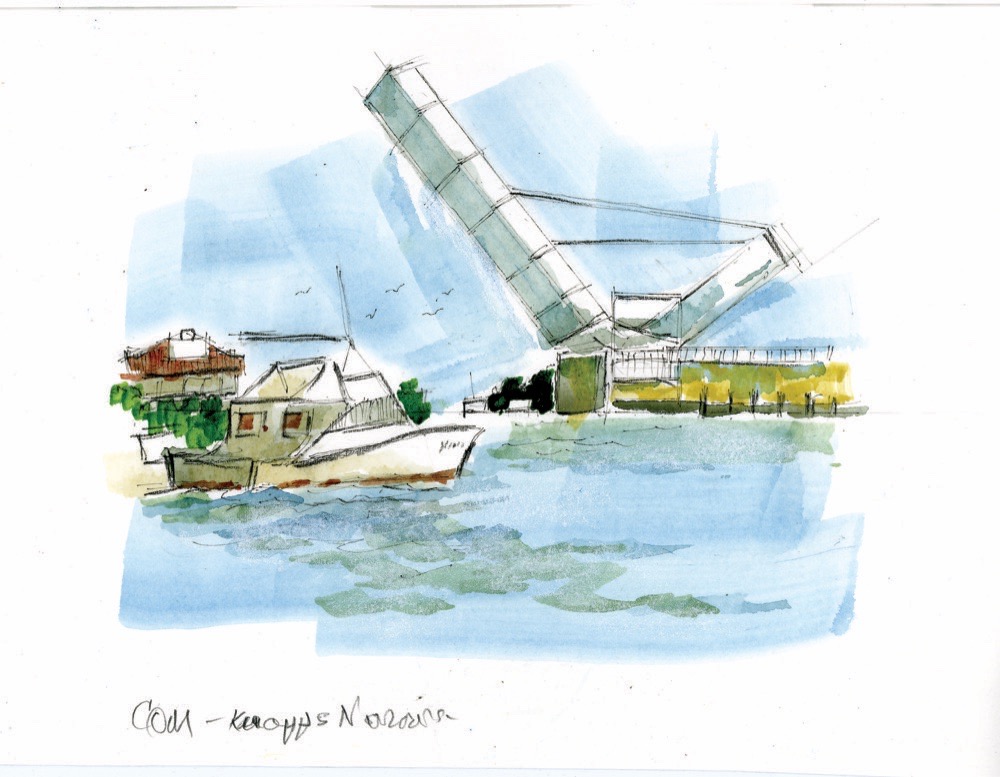
The 1970s and 1980s were a watershed period (if you’ll pardon the expression) for recreational boating on the Chesapeake. New marinas, new dealerships, new boats, new boaters—it was very exciting! The first Annapolis boat show was held in 1970. And in 1971, Dick and Dixie Goertemiller, a young couple from Virginia who had fallen in love with cruising on the Chesapeake, decided to start a magazine dedicated to just that. From the beginning, Chesapeake Bay Magazine featured destinations, recipes, how-to boating tips, boat reviews, and what was to be their most popular feature: Cruise of the Month. Each month, Dick and Dixie would write about one of their recent cruises. Dick would add his own watercolors and often even painted a map to go along with the story. One month Dick and Dixie might write about an idyllic anchorage on the Wye River’s Dividing Creek, and the next a trip up the Great Wicomico River to Coles Creek.
This was just what the cruising and yacht clubs were looking for: a new destination each month, with the sailing instructions built right in. Before long, the magazine’s Cruises of the Month were so popular that it was commonly agreed it was better to wait a month or two before going because it was sure to be jam-packed right after that month’s publication.
These were not glossy, everything-is-always-rosy stories, something other cruisers appreciated. They were fun, but practical. One month, Dick described their recent cruise into the Little Choptank River. Arriving after dark and in a squall, the couple decided rather desperately to try the first creek, Brooks, rather than the second (deeper) Hudson Creek. They immediately ran hard aground. With Dixie holding a flashlight at the helm, Dick jumped overboard in the dark and pouring rain and hauled the boat over the shoal and into deeper water, where they finally could drop the anchor. There was no rush to Brooks Creek the following month.
These cruises were how the Guide to Cruising Chesapeake Bay got its start. A couple of years after the magazine began, clubs and other cruisers asked the Goertemillers to publish a collection of the Cruises of the Month so they could have them all in one place. They did, and for the first few years of its existence, that is just what the Guide was. In the decades that followed, the Guide was filled in a bit at a time until it covered the whole Bay.
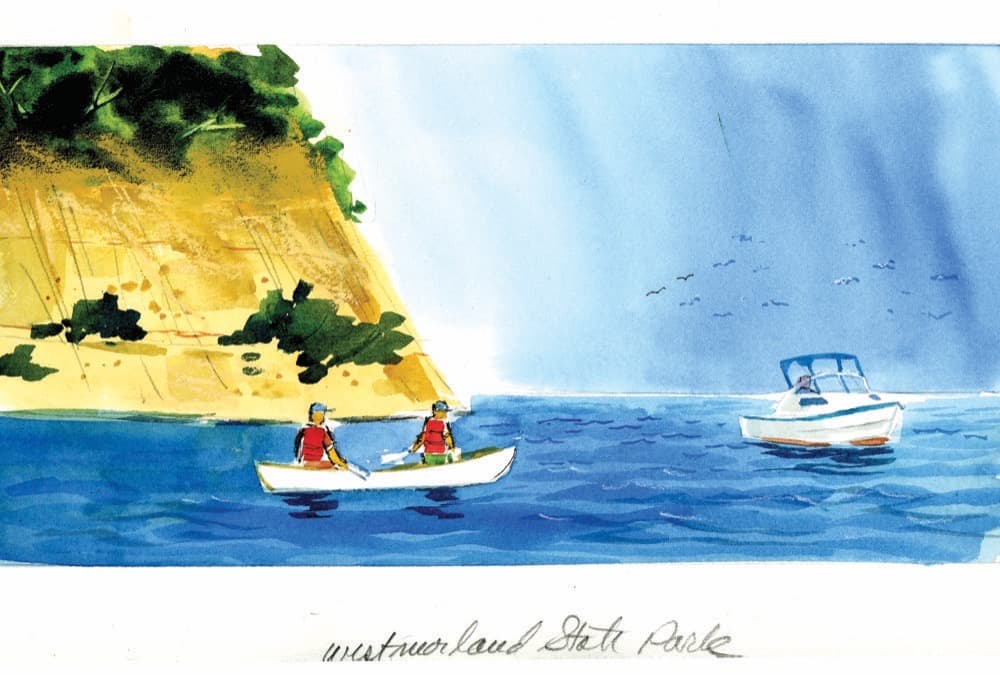
The Bay has also added a few new cruising destinations over the years: National Harbor, for example, or re-imagined destinations like D.C.’s Wharf and The Yards. We’ve lost a few places, too—not towns, of course, but popular anchorages. For example, Dymer Creek’s Grog Island, for generations a popular Northern Neck party spot, quite simply does not exist now. Oh, it’s still on the charts, but in real life, it’s not there. Consider too the Rhode River’s diminishing island trio of High, Big and Flat. They are all going, but ironically, it is High Island that is the most gone of all. Finally, we have lost access to a lot of creeks that were once busy with trade and industry, because their entrances, or the creeks themselves, have shoaled in. The Coast Guard has been steadily pulling out their navigation markers at such creeks all over the Bay.
Shoaling in brings us to depth-sounders and to the equipment we had on our boats, then and now, to keep us comfortable and out of trouble. Most Bay cruising boats in the 1970s came equipped with a box refrigerator, a head of some kind (probably a portable), maybe a propane stove, and a sink with a fresh and saltwater foot pump. No air conditioning, of course, and probably not a shower. No chart plotters. Navigation was by chart, memory, or chance—usually a version of all three. After all, it was easy to remember where the shoals were after your keel had stuck to them like a toothpicked hors d’oeuvre a few times. Alternatively, you could sound your way into a creek or an anchorage with the dinghy or toss a lead-line off the bow as you went. A depth-sounder was a plus, of course, and some cruising boats had them.
Today, of course, nearly every boat bigger than a bread box has a depth finder. It still doesn’t keep us from running aground—we’ll always push our limits or cut this point or that too short—but it does give us a better chance if we see the bottom coming up sharp.
Let me be the first to say I applaud the things we have in 2021 that we didn’t in the 1970s. Most of us still can’t run our air conditioning at anchor without a generator, but when we’re tied up at that slip after a hot day on the water, we can plug in and kick back in comfort. At anchor or in a marina, we can pull a cold can of beer or soft drink from our refrigerator. And we can wash off the day’s salt-spray in our own showers. We can cook or grill in comfort, almost as if we were home. We have TV, the Internet, a cell signal. Heck, we even have Netflix; it all comes along with us. And because the line between our boats and our homes has become less distinct, some boaters were able to self-isolate, work, and cruise last summer during the pandemic.
When it comes to practical features, there are almost too many to mention. Roller-furling jibs and mast-furling mains. Bow thrusters for everyone. Bigger engines that are more efficient, quieter, and more reliable. Chart plotters the size of TVs to tell us where we are and sonar sounders to read the bottom as we go. Radar to see in fog. AIS to see ships in the dark and emergency markers that aren’t really there. We have smart tablets with inexpensive navigation programs that update weekly and talk to everything on the boat but the dog. We have chart programs that can overlay Army Corps of Engineers soundings and apps that tell us about new places to anchor. The family dinghy has been joined by kayaks, SUPs, and inflatable swans the size of a houseboats. It’s mind-boggling, or it would be if it hadn’t all been coming on a bit at a time.
Marinas have been changing too. They are reconfiguring slips and finger piers for bigger boats and making them wider to accommodate the growing number of catamarans. And many are now sponsoring boat clubs, where would-be boaters can get experience before they buy.
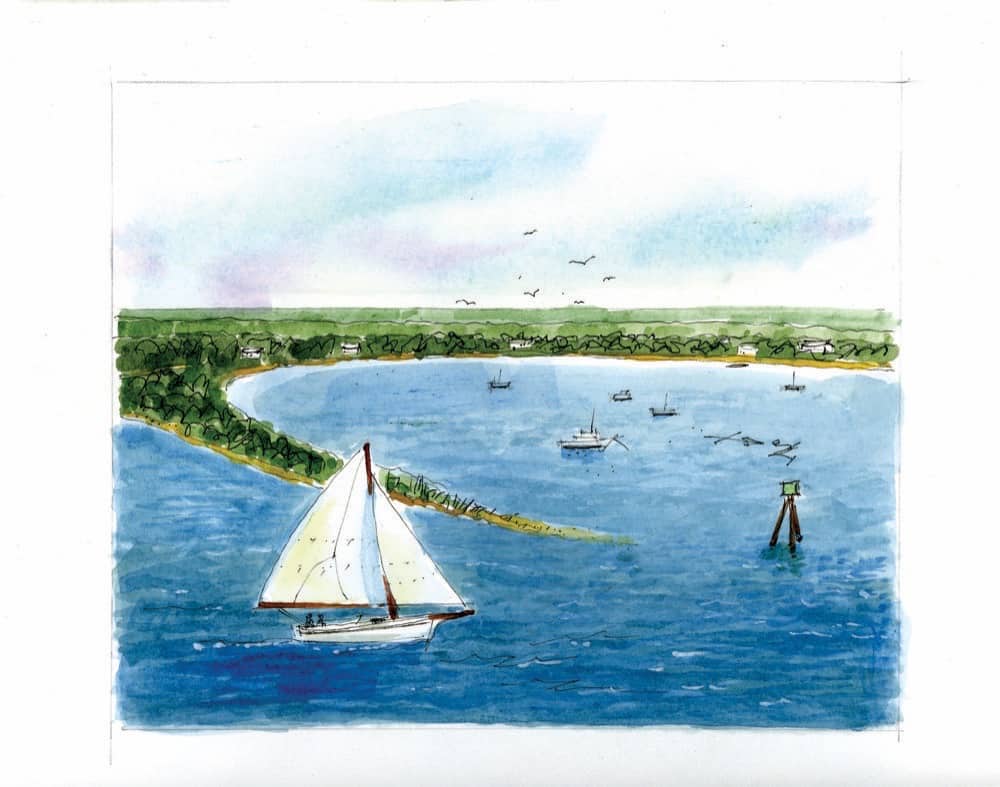
Today the range of boats by size, age, and amenities is greater than it has ever been. By the 1970s, nearly all boatbuilders had switched to fiberglass, which means that today a 50-year-old Tartan 27 and a 1978 Mainship 34 can easily be found sharing dock space with a 1980s Grand Banks and a 1990s Beneteau. And that means that, in a sense, the 1970s never left the Bay; it just made room for everyone else.
The same kinds of changes can be seen in non-cruising boats. Paddlecraft and small outboards have always made up the lion’s share of boats. And they still do. Canoes may have become lighter over the years, but it’s the versatile kayak that has been dominating the market for the past 20 years. Now kayaks themselves are facing stiff competition from stand-up paddleboards, which are filling our local creeks like so many Canada geese. SUPs are eminently portable, easy to learn, and fun to use. Who can argue?
Trailer boats have also changed. They are leaner, faster, considerably bigger, and significantly more expensive. But you’re likely to see many of the same manufacturers, like Grady-White, Boston Whaler, and Chris-Craft. And the variety has proliferated, with bow riders, deck boats, walkarounds, center consoles, and more. All of that means that what was once used exclusively as a fishing boat in the 1970s and 1980s has expanded in the 2020s to be a family boat. Families are seeing more of the Bay by driving to new areas and then launching their boat for a day of exploration and an anchorage with a cool swim.
Finally, sailboat racing has always been a key part of the Bay’s boating life. From class boats like the Oxford 400 and Chesapeake 20 to big boats racing in the Governor’s Cup and Screwpile, its role can’t be minimized. Wednesday Night Races, Frostbite, Beer Can, Schooner— it’s like poetry, and it deserves a history all its own.
Where does all this leave us, 50 years in? As a person who has been boating on the Chesapeake in every one of those decades, I believe it leaves us in remarkable shape. More people than ever are getting out on the water in more different ways than ever before. Free access to the Bay is remarkable. Our extraordinary collection of waterways is open to everyone. We can boat pretty much anywhere we want, and we can drop anchor anywhere we are not in the way. And we can be happy doing it in a kayak or a 100-foot superyacht. (We’d just better have a good depth finder on the superyacht.) The first time I ever went out on the Bay, it was with friends on their 25-foot sailboat. I thought it was wonderful. I still do.
CBM Cruising Editor Jody Argo Schroath, with the help and not infrequent hindrance of ship’s dogs Bindi and Sammy, goes up and down bays, rivers and creeks in search of adventure and stories.

